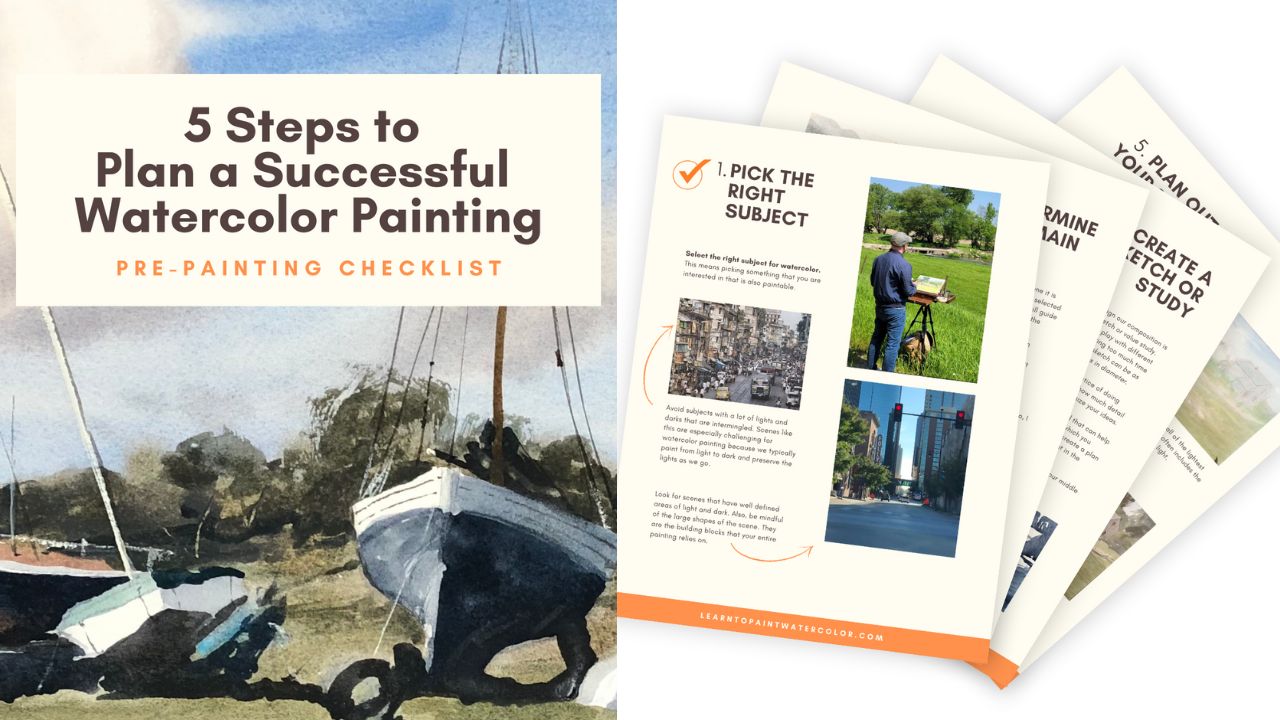Three Best Watercolor Brushes
Dec 15, 2021It can be challenging sometimes to know what supplies are worth your money. There are so many choices out there, so I thought I would share with you the three most important watercolor brushes and how to use them.
1.Large mop brush: This brush is important for the beginning phases of your painting. It holds a lot of water and pigment that is perfect for the first wash of your painting that covers most of your paper. Because these are the largest brushes, they tend to be the most expensive. But there are some more affordable options out there. This is a Rafael soft aqua size eight, and it can run for about $37.
2. Medium round brush: I use the size 14 round brush for about three-fourths of my painting. It is especially useful for the large middle value wash where I’m reloading and changing colors. It can hold a decent amount of water and pigment, but you can still make some smaller marks with it. This is what you want during your second wash. My favorite is a Silver Black Velvet size 14 or 16. They are about $30 per brush.
3.Smaller synthetic brush: The last type of brush that I recommend is a smaller synthetic brush. It holds less water, less pigment, and it's essential when adding your darks and your details to your painting. It is perfect for those little bits that finish up your painting. I use a size 12 Escoda Perla Series, size 8. Those are about $20
Bonus Brush: I love my Custom Shop Pinstripers Brush. It costs about $15.
You can purchase my recommended brushes here. https://www.amazon.com/shop/m.white.art
Think of it this way: you're going from the largest brush to the smallest brush. You’ve got your large mop brush for the first wash that covers your whole paper, the medium-sized brush for that connected shape in the middle, and the smaller brush to add those more intricate details.
After you get a good handle on these three brushes, think about some small marks you might want to make that you can’t quite achieve with what you have. An example of this for me is that when I want power lines or small little birds in my painting, I use something like this Sign Writer's brush. But, really, you can’t paint nearly anything with these three brushes.
Also, I wanted to recommend my free video lesson: How to Avoid Overworking Your Painting. This a video lesson that helps address something that I had to work through quite a bit when I was learning how to paint watercolor. I offer eight different tips to help you avoid overworking your painting. Follow the link below to view this free resource.
Keep on practicing, keep pushing forward, and I'll see you next time.
